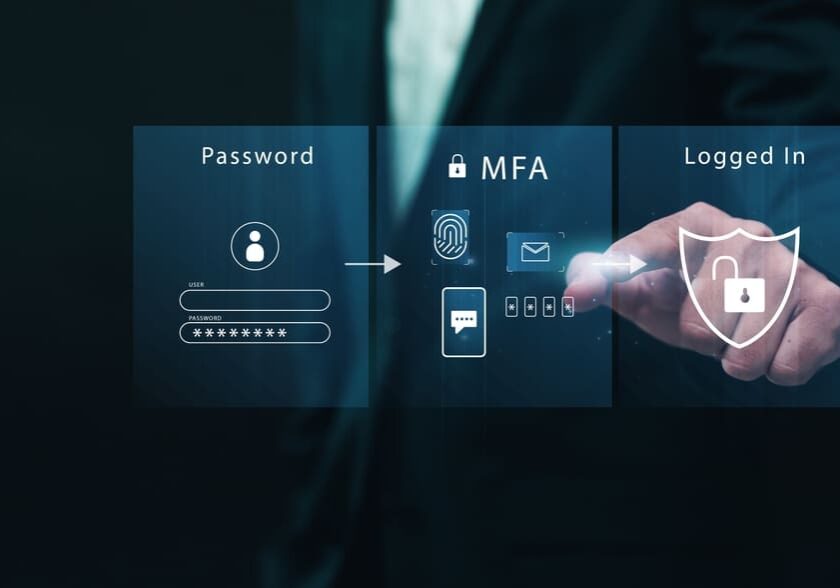In today’s fast-changing digital landscape, small business owners face an ever-growing number of cyber threats. From ransomware attacks to phishing scams, cybercriminals are becoming more sophisticated, making traditional security models less effective than ever. As companies increasingly adopt cloud services, enable remote work, and rely on mobile devices, the old notion of securing a single network perimeter no longer holds.
This is where Zero Trust security comes in — a modern approach to cyber defense designed to protect businesses no matter where their data and users are located. For small and medium-sized businesses (SMBs), adopting a Zero Trust framework isn’t just a buzzword, it’s quickly becoming a critical necessity to stay secure, compliant, and competitive.
In this post, we’ll break down what Zero Trust means, why traditional security methods are falling short, and how your business can start embracing Zero Trust principles to better protect your digital assets.
What Is Zero Trust?
At its core, Zero Trust means “never trust, always verify.” Unlike traditional security models that assume everything inside the network is safe, Zero Trust assumes breaches are inevitable and treats every access attempt as potentially hostile. This mindset fundamentally changes how businesses manage access and protect sensitive information.
Key Principles of Zero Trust

Traditional network security relies heavily on a strong perimeter—like a firewall guarding the company’s physical office network. Once inside, users often have broad access. But with employees working remotely and applications running in the cloud, the network perimeter has dissolved. Zero Trust recognizes this reality and protects your business by securing each user, device, and application individually.
Why Traditional Security Models Are Failing Small Businesses
The old approach to cybersecurity focused on building high walls around an organization’s network and trusting everyone inside. This model worked well when most employees worked on-site and systems were centralized. But today’s digital environment has fundamentally changed:
Remote Work Expands the Attack Surface:
The COVID-19 pandemic accelerated remote work adoption. Employees now access company resources from home, coffee shops, or mobile devices, often using unsecured networks.
Cloud Applications and Services:
Businesses increasingly rely on cloud platforms like Microsoft 365, Google Workspace, and other SaaS apps that live outside traditional network boundaries.
Insider Threats and Credential Compromise:
Attackers often exploit stolen credentials or misuse insider access to bypass perimeter defenses.
Sophisticated Attacks Are More Frequent:
Ransomware, phishing, and supply chain attacks have surged, often targeting SMBs as easier marks.
According to recent industry reports, over 60% of small businesses experience a cyber attack each year, yet many remain unprepared to respond. Traditional defenses are too reactive and siloed to prevent or quickly detect breaches in this complex environment.
For small businesses, the consequences of a cyber breach can be devastating—ranging from data loss, financial damage, reputational harm, and costly regulatory fines. It’s clear that relying on perimeter-only defenses puts your business at unnecessary risk.
How to Start Implementing Zero Trust in Your Business
Adopting Zero Trust might sound complex, but you don’t have to overhaul everything overnight. Here are practical steps to guide your small business on the path to a stronger security posture:
Start by identifying your critical assets—data, applications, users, and devices. Understand how users currently access resources and where sensitive information resides.

How Managed IT Services Like Small Enterprise Technology Can Help
Implementing Zero Trust security can seem daunting, especially when your focus is running a business. That’s where a trusted managed IT service provider (MSP) like Small Enterprise Technology (SET) becomes invaluable.
SET specializes in helping small and mid-sized businesses adopt modern cybersecurity frameworks, including Zero Trust. We provide:
- Comprehensive Environment Assessments to identify vulnerabilities and design Zero Trust strategies tailored to your unique business needs.
- Deployment of Identity and Access Management Tools, such as MFA, SSO, and least privilege policies.
- Micro-Segmentation and Network Hardening to contain threats and minimize risk.
- Continuous Monitoring and Incident Response, so you know about threats the moment they happen.
- Ongoing Support and Training to keep your team informed and prepared against cyber risks.
With SET’s expert guidance, you don’t have to navigate the complexities of Zero Trust alone. Our proactive approach helps you reduce risk, meet compliance, and secure your business’s future.

Taking the Next Step Toward Stronger Cybersecurity
As cyber threats continue to evolve, small businesses must adapt their security strategies to stay protected. Traditional perimeter defenses are no longer enough in a world where data, users, and applications are everywhere.
Zero Trust security offers a modern, effective approach that assumes breach, limits access, and continuously monitors activity—giving your business the best chance to prevent costly cyber incidents.
If you’re ready to take the next step toward a more resilient cybersecurity posture, consider partnering with a managed IT provider like Small Enterprise Technology. Together, we can design and implement a Zero Trust framework that fits your budget, scale, and unique needs—helping you focus on what matters most: growing your business with confidence.
